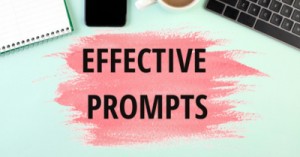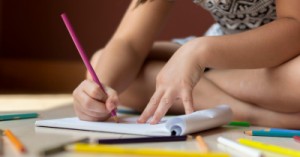A: You can show individual learning cycles in a simplified way by using visual templates and structured documentation that align with the EYLF. These tools help educators track each child’s progress without overwhelming complexity. Here are a few effective strategies.
Use a Circular Planning Model
A simplified cycle often includes five key stages:
- Observe—Record what the child is doing, saying, and showing interest in.
- Analyze – Reflect on what the observations reveal about the child’s learning.
- Plan—Design experiences that build on the child’s strengths and interests.
- Implement—Carry out the planned activities and interactions.
- Reflect—Evaluate the outcomes and adjust future planning.
This cycle can be displayed as a visual loop to show continuity and growth.
Use Ready-Made Templates
- Learning Stories: Narratives that capture individual progress in context.
- Observation Snapshots: Quick notes with links to EYLF outcomes.
- Weekly Learning Intentions: Plans that connect individual goals with group activities.
- Portfolio Pages: Visual records of achievements and milestones.
These templates reduce the burden of writing from scratch and help educators stay consistent.
Visual Boards and Charts
Create wall displays or digital dashboards that show:
- Each child’s current focus or goal
- Milestones achieved
- Next steps in their learning journey
This makes the cycle visible to educators, families, and even the children themselves.
Blend Individual and Group Learning
Instead of separating the two, design group experiences that allow for individual expression. For example:
- A shared art project where each child contributes their own idea
- A science experiment with personalized predictions and reflections
This approach honours individual learning while fostering collaboration
Q: What Are Some Real-World Examples From Educators?
A: Educators in the Educational Leaders network and support group shared several practical approaches:
-
Fortnightly Focus Themes: One educator replaced weekly programming with a two-week focus on themes like weather, sustainability, and community. They used open-ended resources and tagged observations, learning stories, and reflections to these themes—streamlining documentation while supporting both individual and group learning.
-
Interest-Based Grouping: Another educator starts with individual learning plans (ILPs) and then groups children based on shared interests—like relationships, language, or leadership. This allows for intentional small-group experiences that still reflect individual goals.
-
Organic Group Projects: One educator noted that individual interests often evolve into group projects naturally. For example, a child’s fascination with insects might spark curiosity among peers, leading to a collaborative exploration of bugs, habitats, and life cycles.
-
Embedded Individual Journeys: Another approach treats group projects as the container for each child’s learning cycle. Instead of separate plans, each child’s journey is embedded within the shared experience—simplifying documentation and fostering collective growth.
-
Learning Walls with Child Voice: Educators create a wall display where children’s quotes, drawings, or photos are pinned under headings like “What I’m exploring” or “My next challenge.” This makes learning cycles visible and child-led.
-
Cycle Journals: Some services keep a “cycle journal” where each educator contributes short entries about children’s progress. This collective record reduces duplication and builds a shared narrative.
-
Project-Based Documentation: A fascination with recycling led one group to create a “Recycling Champions” project. Each child’s individual learning (sorting, counting, designing posters) was documented within the group project folder.
-
Milestone Celebrations: Educators mark milestones (first time writing their name, building a tall block tower) with small certificates or stickers in portfolios. This adds joy and visibility to the cycle without heavy paperwork.
-
Rotating Educator Roles: In some centres, educators rotate responsibility for documentation cycles weekly. One focuses on observations, another on planning, and another on reflection—sharing the load while keeping cycles consistent.
-
Embedded Cultural Practices: Educators weave cultural observances (e.g., NAIDOC Week, Lunar New Year) into group projects. Each child’s individual journey is documented through their unique contribution, whether storytelling, art, or role play.
Additional Strategies for Simplifying Learning Cycles
-
Use Symbolic Icons and Color Coding
- Assign icons to stages of the cycle.
- Color-code templates to quickly distinguish between observation, planning, and reflection.
-
Micro-Documentation
- Capture “one-liner” reflections or photos instead of lengthy narratives.
- Link these micro-notes to EYLF outcomes, reducing workload while keeping evidence authentic.
-
Digital Integration
- Use apps or platforms that allow tagging observations directly to EYLF outcomes.
- Dashboards can auto-generate reports, saving educators time while ensuring compliance.
-
Family Voice Integration
- Add a “family input” box in templates where parents can share observations from home.
- This strengthens continuity between home and service learning cycles.
-
Reflective Prompts
- Include guiding questions in templates such as
- What surprised me about this child today?
- What strengths did they show?
- What’s one next step I can plan?
- Include guiding questions in templates such as
Practical Tips for Leaders
-
Create “Cycle at a Glance” Posters
- Place posters in staff areas showing the simplified five-step cycle.
- This keeps everyone aligned and reduces overcomplication.
-
Bundle Documentation
- Instead of separate files, educators attach observations, reflections, and plans into one rolling document per child.
- This reduces fragmentation and makes cycles easier to track.
-
Use Peer Reflection
- Encourage educators to reflect together on cycles during team meetings.
- Shared insights often reveal patterns across children and strengthen group planning.
By blending visual tools, simplified templates, and collaborative practices, educators make learning cycles both manageable and meaningful. The key is to embed individual journeys within collective experiences, ensuring documentation supports, not overwhelms, the practice of nurturing children’s growth.
Further Reading
5 Stages Of The EYLF Planning Cycle
Practical Examples Of The Planning Cycle In Action
Q: How Can You Show Individual Learning Cycles In A Simplified
The Planning Cycle To Document Children's Learning
Strategies For An Impactful and Meaningful EYLF Planning Cycle
Simplified Observation & Planning Cycles
The Cycle of Planning







 Here is the list of the EYLF Learning Outcomes that you can use as a guide or reference for your documentation and planning. The EYLF
Here is the list of the EYLF Learning Outcomes that you can use as a guide or reference for your documentation and planning. The EYLF The EYLF is a guide which consists of Principles, Practices and 5 main Learning Outcomes along with each of their sub outcomes, based on identity,
The EYLF is a guide which consists of Principles, Practices and 5 main Learning Outcomes along with each of their sub outcomes, based on identity, This is a guide on How to Write a Learning Story. It provides information on What Is A Learning Story, Writing A Learning Story, Sample
This is a guide on How to Write a Learning Story. It provides information on What Is A Learning Story, Writing A Learning Story, Sample One of the most important types of documentation methods that educators needs to be familiar with are “observations”. Observations are crucial for all early childhood
One of the most important types of documentation methods that educators needs to be familiar with are “observations”. Observations are crucial for all early childhood To support children achieve learning outcomes from the EYLF Framework, the following list gives educators examples of how to promote children's learning in each individual
To support children achieve learning outcomes from the EYLF Framework, the following list gives educators examples of how to promote children's learning in each individual Reflective practice is learning from everyday situations and issues and concerns that arise which form part of our daily routine while working in an early
Reflective practice is learning from everyday situations and issues and concerns that arise which form part of our daily routine while working in an early Within Australia, Programming and Planning is reflected and supported by the Early Years Learning Framework. Educators within early childhood settings, use the EYLF to guide
Within Australia, Programming and Planning is reflected and supported by the Early Years Learning Framework. Educators within early childhood settings, use the EYLF to guide When observing children, it's important that we use a range of different observation methods from running records, learning stories to photographs and work samples. Using
When observing children, it's important that we use a range of different observation methods from running records, learning stories to photographs and work samples. Using This is a guide for educators on what to observe under each sub learning outcome from the EYLF Framework, when a child is engaged in
This is a guide for educators on what to observe under each sub learning outcome from the EYLF Framework, when a child is engaged in The Early Years Learning Framework describes the curriculum as “all the interactions, experiences, activities, routines and events, planned and unplanned, that occur in an environment
The Early Years Learning Framework describes the curriculum as “all the interactions, experiences, activities, routines and events, planned and unplanned, that occur in an environment


